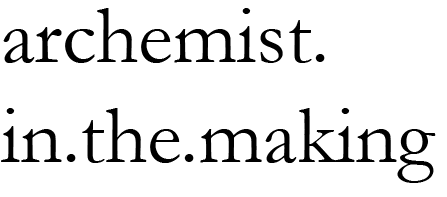*note - years after writing this article and learning more about the term Alexithymia - I’ve realised that I have misused the term. It is not a phrase that should be used nor discussed in lightly. As I am not confident in explaining what it means (because I saw it from Tumblr…), here is one of the many places in which explains the term. - Sincerely, K (2022)
*A********a - the inability to speak about one’s own emotions verbally
This semester I have taken on an elective that requires putting your own personal spin to hand drawings. From designing interventions for a specific group of people to creating wearable architecture out of party supplies to designing a facade, it was rather cathartic to apply my own personality to these drawings (I also forgotten how much I missed hand drawing). But it was onto our third assignment when my friend and I were discussing about how we have to present our drawings that she said something that struck me.
“I don’t like being personal with my projects”
Considering that I have always enjoyed creating artworks that is a personal reflection of my mindset and enjoy writing melancholic thoughts on tumblr, I’ve never really considered that people like to be very private about their own feelings since our designs are a response to a specific matter that we enjoy talking about. However, to look more in-depth of this elective, some of my friends prefer to distant their emotional self while presenting their work, which also made sense the reason why a lot of my peers were intimidated by our tutor when he advertised that this elective was going to be ‘ALL ABOUT [US]’ (hence the reason why our class is very small compared to others).
It is interesting, to think that architecture is such a private matter - indeed, we have a beautiful or plain looking exterior however we can never really be confident about the interior of the spaces. In addition - there is that common stereotype that we are so worn down but wanting to keep that dignity that we could face any challenges that we prefer to present some emotional detachment from our work. Personally, I’d like to question whether we are architecture students are afraid of being vulnerable to prevent ourselves being torn to shreds by our critics. On top of that, does exposing your own emotions guarantee a certain sign that we are not strong enough as designers?
Louise Bourgeois once said “some artists say to make work readable for the public is the artist’s responsibility, but I don’t agree with that. The only responsibility is to be absolutely truthful to the self”. I couldn’t agree more with that. However, there is that constant struggle as a designer when you want to adhere to your own feelings despite clashing with the client’s needs. Looking back at my past entry, I wonder if the reason why sometimes architects don’t feel a sense of responsibility should their buildings go horribly wrong is because of the certain level of detachment they have with the final outcome.
During one of our Professional Practice lectures, Karen McWilliam (one of Elenberg Fraser’s Principals) pointed out: sometimes there are decisions that are beyond their control yet they still have responsibility attached to it. I guess from her accounts of certain buildings which they have no control whatsoever despite being sued for their main design singles out the complicated relationships within this field. Moreover, perhaps it is the many experience of projects that have come and gone also changed the level of emotional attachment to designing, after all - once the building is done, you hand over the keys and the door is perhaps closed off to you forever.
In retrospect, I’d like to think that everyone in my year level have been vulnerable with their projects - moreover our tutors too. We spend so many hours and dare I say a few sleepless nights to produce these ideas via lines and imagery that would be supported by or words that we could easily formulate. However, it is still rather difficult to properly express ourselves when we are forced to design something that is a self-reflection of our beliefs.
But let’s bring this back to architectural studies that is preparing us for professional practice - at what point should projects be highly personal? Does being emotionally invested in projects affect the outcome of the design? Otherwise, will emotional attachment eventually become a burden or a great responsibility for clients to bear? Yet does being emotionally invested bring a level of empathy to the design brief?
I guess the ultimate answer really lies in the level of professionalism in our work ethic alongside our communication skills.
Personally I’d like to imagine that it is okay for me to let my heart sit on my sleeves, but maybe that statement may be retracted once I dive deeper into reality.
*This article has been amended in 22nd January, 2022
